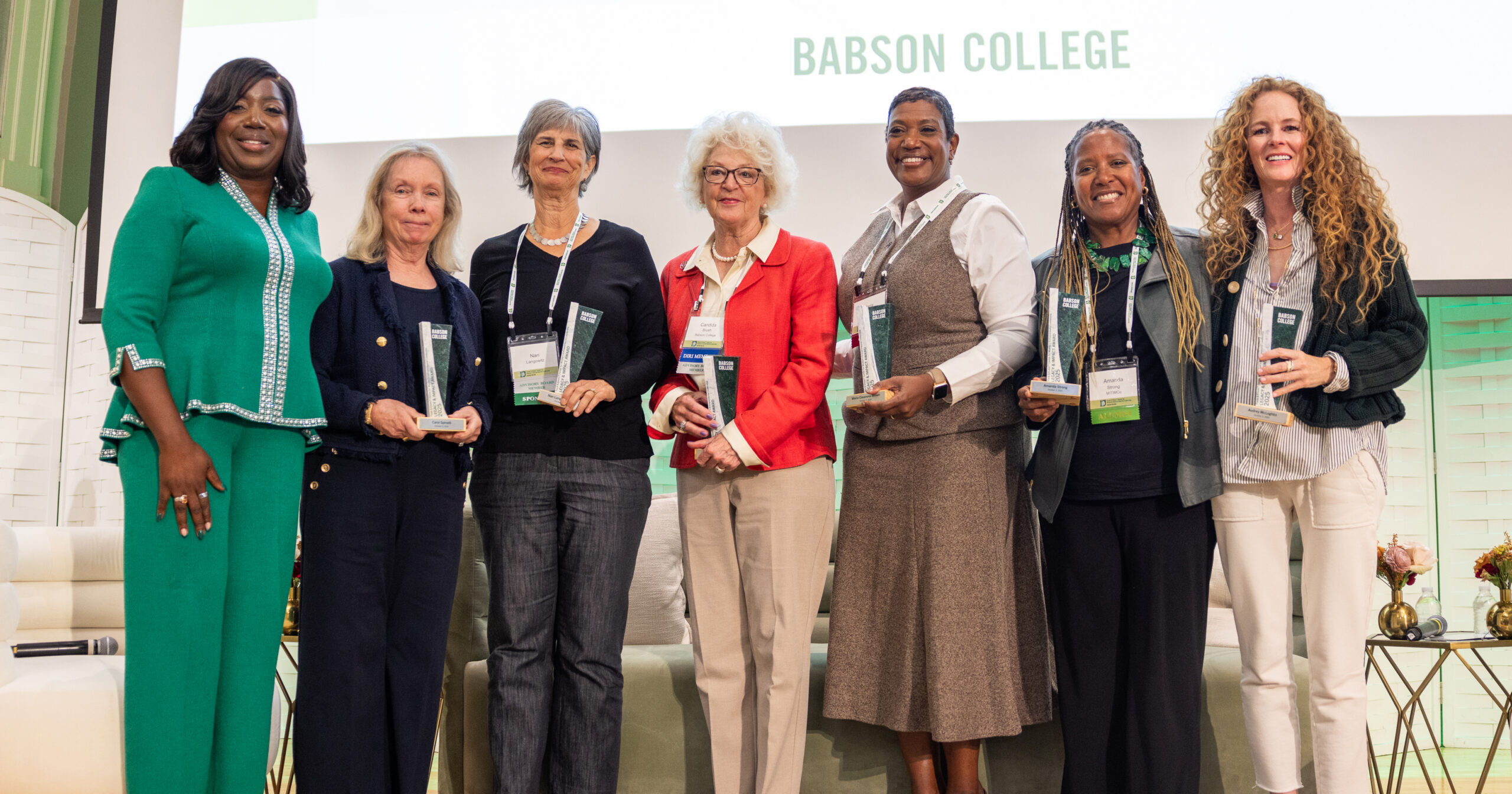Venture Capital Decoded: A Serial Entrepreneur’s Guide for Students
Editor’s note: The New Tech Ventures Blog is produced by students in the New Technology Ventures course, taught by Assistant Professor of Practice Stephen Brand. The course features tech leaders and entrepreneurs as weekly guest speakers, and students are sharing their insights on the ventures and the experience. This post was written by the team of Jordan Hurd ’26, Youssef Kamel ’25, and Spencer Karns ’26.
Patrick Sobalvarro, the CEO and co-founder of Veo Robotics, has always been driven by the vision of making advanced robotics technology accessible and safe for industrial environments. With a PhD from MIT’s Computer Science and Artificial Intelligence Laboratory and a career spanning over 25 years in technology, Sobalvarro has combined his deep expertise in computer vision and AI with his passion for industrial automation to revolutionize human-robot collaboration.
Before founding Veo Robotics, he served as CTO at Site59 (acquired by Travelocity for $43 million) and founded IntelliVid (acquired by Tyco), experiences that gave him unique insights into both technological innovation and the venture capital landscape. His commitment to transforming industrial automation led him to create technology that enables robots and humans to work together safely, making advanced manufacturing techniques accessible to companies of all sizes.
When this accomplished entrepreneur spoke to our entrepreneurship class, he didn’t just share his story—he provided a master class in navigating the complex world of venture capital (VC). With Veo Robotics recently acquired by Symbotic for $8.7 million, Sobalvarro’s insights come from decades of experience on both sides of the funding table.
When (and Why) to Seek Venture Capital
Sobalvarro began by reframing how we think about VC funding. Rather than seeing it as a universal milestone for startups, he emphasized that venture capital is a specific tool for specific scenarios. He outlined three primary situations where VC funding becomes crucial: capital-intensive industries where significant upfront investment is required, markets with strong network effects where rapid scaling is crucial, and situations where the expertise and connections of VCs can provide a significant competitive advantage.
However, Sobalvarro stressed that the decision to seek VC should be driven by more than just financial needs. He shared how Veo Robotics’ decision to seek venture funding was influenced not just by the capital requirements of developing advanced robotics technology but also by the need for strategic partnerships and industry expertise that their VCs could provide.
The Art of Attracting VC Interest
Perhaps the most valuable part of Sobalvarro’s talk focused on effectively attracting venture capital. He emphasized that actions speak louder than pitch decks, sharing an anecdote about how Veo Robotics secured their Series A funding largely based on early prototype demonstrations rather than elaborate presentations. Instead of relying solely on slides, entrepreneurs should focus on demonstrating real progress and traction through user growth, revenue metrics, or significant technological achievements.
The timing of VC engagement emerged as a crucial point. Sobalvarro advised that the best time to connect with potential investors is well before you need funding. He recommended a “warmup” period of 6–12 months, during which entrepreneurs should attend industry events, participate in startup programs, and leverage their network for introductions. He shared how he had been in contact with Veo’s eventual lead investor for over a year before formally pitching them.
Customer engagement is paramount in attracting VC interest. Venture capitalists are ultimately interested in businesses that solve real problems for real customers, so demonstrating strong customer interest through key metrics is essential. Sobalvarro advised focusing on three specific metrics: customer acquisition cost (ideally showing a downward trend), lifetime value (showing an upward trend), and churn rate (demonstrating strong retention). This goes hand in hand with cultivating a public presence—consistently sharing your journey and achievements helps build credibility and establishes you as a thought leader in your industry.
Preparing for Due Diligence
Sobalvarro emphasized the importance of being thoroughly prepared for the due diligence process, sharing that his team spent nearly three months preparing documentation for their Series B round. Having your financials, legal documents, and business plan in order before engaging with VCs demonstrates professionalism and readiness for investment. He advised creating a comprehensive data room with three years of financial projections, detailed cap tables, and clear documentation of key intellectual property.
When it comes to the actual pitch, Sobalvarro stressed the importance of demonstrating your execution ability. He suggested creating a “milestone deck” showing clear achievements against previously set goals. Being able to confidently discuss your market size, competitive landscape, and go-to-market strategy can make the difference between securing funding and missing out on an opportunity.
Our Key Takeaways
For student entrepreneurs, Sobalvarro’s practical approach to venture capital resonated deeply with us. His emphasis on building genuine relationships and demonstrating value through action challenged the common narrative of focusing solely on perfecting a pitch deck.
Perhaps most eye-opening was his perspective on timing. Many of us had assumed that approaching VCs should wait until we had a perfect product or business model. However, Sobalvarro’s advice to start building relationships early shifted our mindset from viewing VCs as just capital providers to potential long-term partners in our entrepreneurial journey.
His insights sought to fundamentally change how we think about fundraising. Rather than seeing it as a necessary evil or a checkbox to tick, we now understand it as an ongoing process of relationship-building and value demonstration. As we continue our entrepreneurial journeys, we’ll carry these lessons forward, focusing on building businesses that show rather than tell, and approaching venture capital with both confidence and strategic clarity.
Posted in New Tech Ventures Blog




